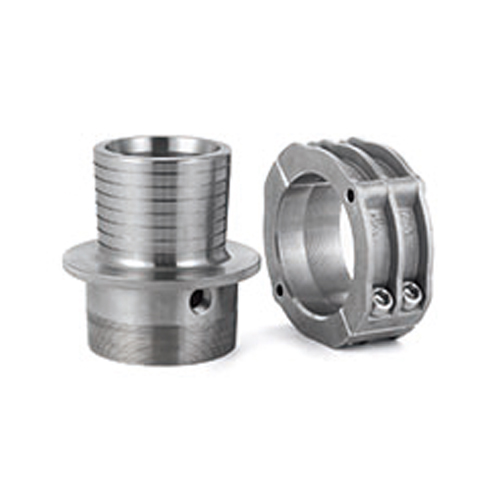This website uses cookies so that we can provide you with the best user experience possible. Cookie information is stored in your browser and performs functions such as recognising you when you return to our website and helping our team to understand which sections of the website you find most interesting and useful.
- Home
- Materials
- CNC Machining Metal
- Stainless Steel
- Stainless Steel 316
Stainless Steel 316

Material Type
Metal
Material Name
Stainless Steel 316
Alternative Names
S31600 | 1.4401 | X5CrNiMo17-12-2
Process Compatibility
CNC Milling, CNC Turning
introduction
Stainless Steel 316 in CNC Machining

Stainless Steel 316, also known as marine-grade stainless steel, is a popular material in CNC machining due to its good mechanical properties. It has high tensile strength and good resistance to high temperatures.
While Stainless Steel 316 is machinable, it is generally more challenging to machine than other materials like carbon steel or aluminum. It tends to work-harden, causing increased cutting forces and tool wear. Coated tools, such as TiN (Titanium Nitride) or TiAlN (Titanium Aluminum Nitride), can enhance tool life by reducing friction and wear. Proper tool geometry is also important. Sharp cutting edges and appropriate rake angles contribute to efficient machining. After machining, it's common to passivate Stainless Steel 316 to remove free iron from the surface, reducing the risk of corrosion.
Composed primarily of chromium, nickel, and molybdenum, it excels in resisting corrosion, particularly in harsh environments like marine and chemical settings. This alloy maintains its strength and corrosion resistance at elevated temperatures and is easily fabricated and welded, allowing for versatility in manufacturing processes. Known for its strength, formability, and durability, it finds widespread use in marine equipment, chemical processing, medical instruments, food processing, and the petrochemical industry. It has a non-reactive nature with chemicals and can withstand corrosive elements.
Properties
Properties Table of Stainless Steel 316
| MECHANICAL PROPERTIES | |
|---|---|
| Ultimate Tensile Strength | 480-600 MPa |
| Yield Strength | 170-230 MPa |
| Young's Modulus(Elasticity) | 190-205 GPa |
| Elongation at Break | 38-55% |
| Physical Properties | |
| Corrosion Resistance | Excellent |
| Magnetism | Non-magnetic |
| UV Resistance | Excellent |
| Weldability | Excellent |
| Thermal Properties | |
| Maximum Service Temperature | 750-925 °C |
| Thermal Expansion Coefficient | 15-18 x 10^-6/°C |
| Thermal Conductivity | 13-17 W/(m·°C) |
| Electrical Properties | |
| Electrical Resistivity | 69-81 μΩ*cm |
TECHNOLOGY OVERVIEW
Basic Knowledge of Stainless Steel 316
What is Stainless Steel 316?
316 stainless steel is a type of stainless steel with molybdenum, making it the second most common austenitic stainless steel after grade 304. It is often used in marine environments due to its high resistance to pitting corrosion compared to other steel grades without molybdenum.
Its minimal response to magnetic fields allows it to be used in applications requiring a non-magnetic metal. Although not entirely rust-proof, 316 stainless steel is more corrosion-resistant than many other stainless steels. Surgical steel is an example of a subtype made from 316 stainless steel. In addition to molybdenum, 316 also contains various other elements in different concentrations.
Advantages of Stainless Steel 316
Excellent corrosion resistance
High temperature resistance
Aesthetic appeal
Strength and durability
Ease of fabrication
Biocompatibility
Hygienic properties
Low maintenance
Wide range of applications
Applications of Stainless Steel 316
Handling corrosive chemicals in processing equipment.
Boat fittings, marine hardware, and underwater structures.
Surgical instruments, implants, and medical equipment.
Processing equipment, storage tanks, and piping in the food and beverage industry.
Manufacturing equipment and vessels in the pharmaceutical industry.
Aircraft exhaust systems and certain aerospace components.
Automotive exhaust systems and mufflers.
Manufacturing of heat exchangers.
FAQ
Machining Stainless Steel 316 Buying FAQ
Other Materials

Stainless Steel 316L
Stainless Steel 316L is a popular austenitic stainless steel in CNC machining due to its excellent corrosion resistance, high strength, and versatility.

Stainless Steel 304L
Stainless Steel 304L is a widely used stainless steel alloy known for its corrosion resistance, formability, and weldability.

Stainless Steel 304
Stainless Steel 304 is a commonly used material in CNC machining. It is known for its corrosion resistance and mechanical properties.
Get An Accurate Quote For Your Next Projects
No matter your project is complicated or simple, no matter is metal or plastic, you will get an accurate quotation within 6 hours.
Get A Quote Today